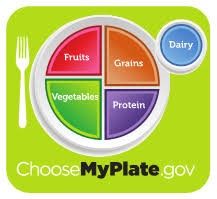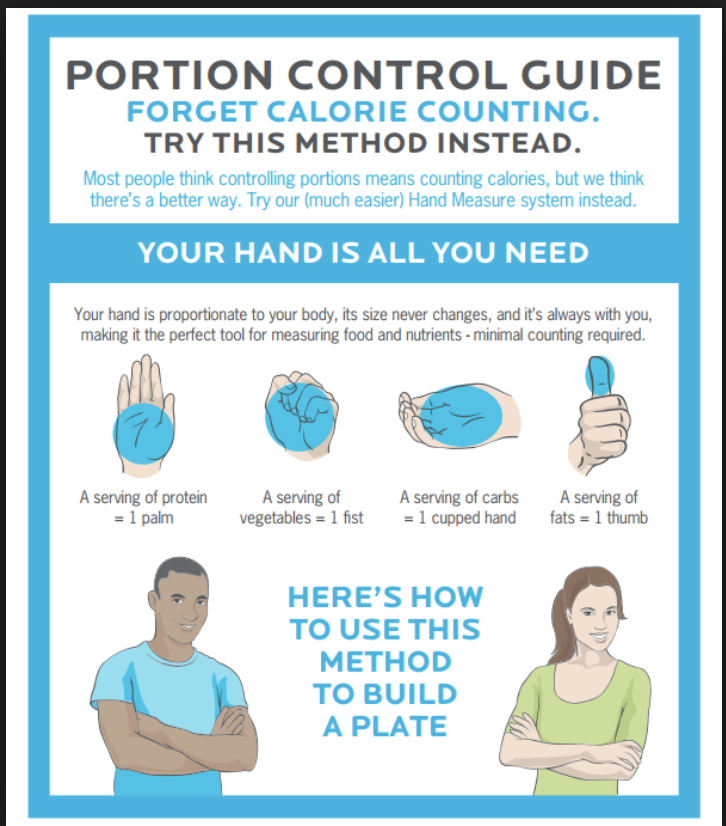Authored by Bri Higgins, Registered Dietitian for the Warren County Health District
Ever heard the term, “eat clean”? Most dietitians cringe at this terminology. Food is neither “clean” nor “dirty.” This concept perpetuates disordered eating and tends to put health halos over foods that may not be the most nutritionally sound. Health washed foods are everywhere. It is important to remember that most foods generally have some nutritional benefit. Although whole fruit is a better choice, juice may contain vitamin C. Although high in sugar, ice cream contains protein. Additionally, enriched breads and pastas are fortified with B vitamins and iron our bodies need.
What Are Processed Foods?
According to the Academy of Nutrition and Dietetics, “processed foods can be defined as any food that is cooked, canned, frozen, packaged or changed in nutritional composition through fortification, preservation or preparation.” In other words, most foods go through some processing. Processed food falls on a spectrum from minimally to heavily processed (1):
- Minimally processed foods — such as bagged spinach, cut vegetables and roasted nuts — often are simply pre-prepped for convenience.
- Foods processed at their peak to lock in nutritional quality and freshness include canned tomatoes, frozen fruit and vegetables, and canned tuna.
- Foods with ingredients added for flavor and texture (sweeteners, spices, oils, colors and preservatives) include jarred pasta sauce, salad dressing, yogurt and cake mixes.
- Ready-to-eat foods — such as crackers, granola and deli meat — are more heavily processed.
- The most heavily processed foods often are pre-made meals including frozen pizza and microwaveable dinners.
Organic Foods
Organic does not mean better. Organic foods are grown without artificial pesticides, fertilizers, or herbicides. Organic meat, eggs, and dairy products are obtained from animals that are fed natural feed and not given hormones or antibiotics (2). On the other hand, antibiotic resistance happens when bacteria develop the ability to survive or grow despite being exposed to antibiotics designed to kill them (3).
Natural Foods
Natural foods are free of synthetic or artificial ingredients or additives (2). According to the Food and Drug Administration (FDA), foods containing natural flavors, sweeteners, or other plant-derived substances can be labeled natural. In addition, foods containing highly processed high fructose corn syrup (HFCS) can also be labeled “natural,” since the synthetic materials used to make HFCS are not added into the final product. It is also important to understand foods containing genetically engineered or modified ingredients can be labeled “natural (7).”
On the other hand, the United States Department of Agriculture (USDA) has a different definition of natural when applied to meat, poultry, and eggs. Consumers purchasing “natural” meat, poultry, and eggs can be confident that there are no artificial ingredients or colors added. However, it’s important to note that “natural” does not necessarily mean hormone-free or antibiotic-free. As mentioned before, this is where antibiotic resistance is a concern (4). Organic animal production may decrease the prevalence of antibiotic resistance. Organic farm animals are less likely to develop certain diseases compared to animals on conventional farms (5).
Organic vs. Conventional Foods
There is little difference in nutritional content between organic and conventional foods. Stanford University evaluated nearly 250 studies comparing the nutrients in organic vs. traditional foods and the health outcomes that result. This study indicated little differences in nutritional content, aside from slightly higher phosphorous levels in organic foods, and higher omega-3 fatty acid content in organic milk and chicken (6).
The difference between organic and conventional foods and cancer risk is another major concern due to exposure of pesticides. The Journal of the American Medical Association followed 70,000 adults over a seven-year timeframe; those who reported the highest intakes of organic foods had decreased cancer incidence compared with those who rarely selected organic foods. Other lifestyle factors must be considered in this study. Additionally, the study did not measure pesticide residues in any of the participants. One other 2014 study did not show a decreased cancer risk in those who usually or always consumed organic foods. Therefore, it is unclear if differences in pesticide levels correlated with decreased cancer incidence (7).
More conclusive results can be drawn from the consumption of fruits and vegetables regardless of whether they are organic or conventional. The American Institute of Cancer Research and World Cancer Research Fund released several studies that found decreased cancer risk associated with increased consumption of fruits and vegetables. Conversely, low intakes of fruits and vegetables were associated with increased risk of certain types of cancers (7).
Check the Nutrition Label and Ingredients
See below for tips to enhance healthy food selection:
- Try to keep sodium <300 mg per serving or <600 mg per serving if consuming a pre-packaged frozen meal
- Try to ensure limited added sugars (<10% total calories) (8)
- No more than 6 teaspoons/day women (25 grams)
- No more than 9 teaspoons/day men (36 grams)
- Limit trans fats as much as possible
- Limit saturated fats to <10% total calories (9)
- See if artificial sweeteners are added
**Lower carb options are not always the best options. Carbs with high fiber are good for digestive and heart health.
What are Added Sugars?
Added sugars are any sugar that is not naturally occurring in the food and has been added manually. Added sugars aren't just hidden in processed sweets. They are often added to low-fat foods, breads, and pasta sauces as well (1).
Added Sugars List:
- Honey
- Syrups
- High fructose corn syrup
- Agave nectar
- Molasses
- Table sugar
- Cane sugar
- Brown sugar
- Corn sweetener
- Raw sugar
- Fruit juice concentrates.
- Names ending in “ose”
So, Are Artificial Sweeteners a Good Option?
High-intensity sweeteners are commonly used as sugar substitutes or sugar alternatives because they are often sweeter than sugar but contribute next to no calories when added to foods. High-intensity sweeteners, like all other ingredients added to food in the United States, must be safe for consumption (8).
The FDA has approved five artificial sweeteners:
- Saccharin (Sweet-n-Low)
- Acesulfame potassium (Ace-K)
- Aspartame (Equal)
- Neotame
- Sucralose (Splenda)
**It has also approved one natural low-calorie sweetener, stevia.
Concerns about the use of artificial sweeteners include consumers replacing the lost calories through other sources, possibly offsetting weight loss or health benefits. Studies leading to FDA approval have mostly ruled out cancer risk; however, studies involving diet soda were done using far smaller amounts than the 24 ounces a day consumed by most people. In the Multiethnic Study of Atherosclerosis, daily consumption of diet drinks was associated with a 36% greater risk for metabolic syndrome and a 67% increased risk for type 2 diabetes. It is important to also consider dietary habits, activity levels, and genetics in this case since all of these contribute to the development of metabolic syndrome and diabetes. Artificial sweeteners are relatively new to the nutrition world, and more studies need to be conducted to give us conclusive evidence on their long-term effects (10).
Other Considerations
Foods can have a lot of gray areas in terms of nutritional content. For instance, dried fruit contains more sugar, fat, and calories than raw fruit; nevertheless, it contains antioxidants and more iron to combat cancer and promote healthy blood cells. Granola and cereals often have higher sugar contents, but they also contain fiber, a common nutrient deficiency in the U.S. Thirdly, cow’s milk is fortified with calcium and vitamin D. Living in Ohio, it is difficult to get adequate amounts of vitamin D from the sun in the winter months. If you dislike egg yolks or fish, cow’s milk may be your best choice to ensure adequate vitamin D levels.
Other considerations include cost and convenience. Organic foods typically cost more than conventional. Buying seasonal and local foods also cuts costs and increases the likelihood of freshness. Pre-cut vegetables may have fewer nutrients, but it is much easier to pack and add to dishes while in a hurry. Whether pre-cut or not, fruits and vegetables are packed with nutrients and oftentimes low in calories. In the end, it is better to consume fruits and vegetables than to avoid them.
Putting It All Together
Ultimately, consuming a diet rich in fruits, vegetables, whole grains, lean proteins, and healthy fats such as nuts and olive oils are your best bet for maintaining a healthy weight. Additionally, you are more likely to reduce risk of chronic disease. The MyPlate visual is an excellent tool to model your meals. Practice the hand method of portion control: starches should be limited to 1 cupped hand (1/2 cup), protein portions should cover your palm’s surface (3-4 oz.), and your thumb can be used for fat servings (1 tablespoon). This will help you make healthy choices at home and while eating out. For more questions about healthy eating or weight and disease management, consult a registered dietitian.
Image One

https://www.myplate.gov/
Image Two

https://www.mtsac.edu/wellness/pdf/nutrition/portion_control_infographic.pdf
Resources:
- https://www.eatright.org/food/nutrition/nutrition-facts-and-food-labels/processed-foods-whats-ok-and-what-to-avoid
- https://www.healthychildren.org/English/healthy-living/nutrition/Pages/Differences-in-Organic-
- https://www.cdc.gov/foodsafety/challenges/antibiotic-resistance.html
- https://nutrition.org/interpreting-food-labels-natural-versus-organic/
- https://www.ncbi.nlm.nih.gov/pmc/articles/PMC5658984/
- https://www.health.harvard.edu/blog/organic-food-no-more-nutritious-than-conventionally-grown-food-201209055264
- https://www.cancernutrition.org/resources/organic-foods-and-cancer-risk/
- https://nutrition.org/interpreting-food-labels-natural-versus-organic/
- https://www.heart.org/en/healthy-living/healthy-eating/eat-smart/sugar/added-sugars
- https://my.clevelandclinic.org/health/articles/11208-fat-what-you-need-to-know
- https://www.health.harvard.edu/blog/artificial-sweeteners-sugar-free-but-at-what-cost-201207165030
About the Author
 Bri Higgins is a registered dietitian for the Warren County Health District. She works specifically in weight management, prenatal, and pediatric nutrition. Bri attended Miami University of Ohio for her undergraduate and master’s studies in nutrition and exercise science. Bri’s favorite hobbies are cooking and weightlifting. She also enjoys dancing, hanging out with friends, and laying by the poolside in the summer. She resides in Middletown with her fiancé, Jeron. The two of them are getting married in September of this year.
Bri Higgins is a registered dietitian for the Warren County Health District. She works specifically in weight management, prenatal, and pediatric nutrition. Bri attended Miami University of Ohio for her undergraduate and master’s studies in nutrition and exercise science. Bri’s favorite hobbies are cooking and weightlifting. She also enjoys dancing, hanging out with friends, and laying by the poolside in the summer. She resides in Middletown with her fiancé, Jeron. The two of them are getting married in September of this year.
Follow Bri on Social Media!
Instagram | Youtube | Facebook